Aquarium Conditioned
Zanzibar CoralBanded Shrimp
Stenopus zanzibaricus
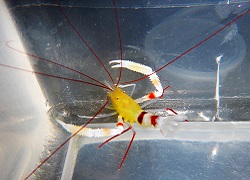 Hard to Find! Red Feelers and Red Antenna's
Hard to Find! Red Feelers and Red Antenna's
Description:
The Zanzibar Banded Coral Shrimp (Stenopus zanzibaricus) has a red and white body, Red legs and golden yellow abdomen. Very similar to the Atlantic Golden Coral Banded Shrimp (S. scutellatus) but Zanzibar has red antennae while the Golden Banded Coral Shrimp's antennae are white. The Zanzibar Banded Coral Shrimp is also more predominately white while the Golden Banded Coral Shrimp is more yellow-gold.
All crustaceans will benefit from supplements of iodine and mineral to help form a healthy and hard exoskeleton. Regular interval water changes with a good, high quality salt mixe usually provides enough of both, but extra supplements may be needed in reef tanks or in tanks with heavy invertebrates loads that use up iodine and other minerals rapidly.
Food and Diet:
Coral Banded Shrimp shrimp are omnivores that will eat anything meaty and some greens. They will graze from one end to another end of the tank on microalgae's. But upon introducing a few pellets or a tasty morsel of some sort they head straight for it. Generally any kind of sinking pellet will do.
Level of Care:
Easy
Approximate Purchase Size:
1" to 2"
reg. $64.99
Now $49.99
|
|
Maidens Hair Plant
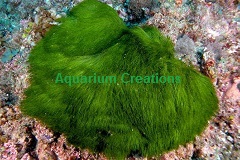
Fish Leave it alone! They don't like it's taste!
Description:
Maidens Hair is also called Turtle Grass. It is a green filamentous marine plant whose appearance is similar to thin tufts of hair. There lies the name Maidens hair. Your tangs and other fish will leave this plant alone because they don't find it palatable. These plants are a wonderful breeding ground for beneficial crustaceans like amphipods and copepods.
Difficulty to Grow:Easy
Reef Safe:Yes
Lighting Requirements:Provide Low to Medium Light
Waterflow: Medium to strong water flow
Water Parameters:72-78° F, dKH 8-12, pH 8.1-8.4, sg 1.023-1.026
Supplements: Magnesium, Trace Elements, Iron
Care Info.. Float the unopened bag of your macroalgae in the aquarium for 30 minutes to 1 hour to allow the temperatures to equalize. Then place the plant in your tank, sump, or refugium.
|
Small $27.99
Medium $45.99
|
Aquarium Conditioned
Coral Beauty Angelfish
Centropyge bispinosus
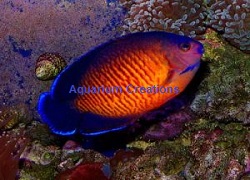 We support sustainably collected marine fish from Bali, Fiji, and Solomon Islands
We support sustainably collected marine fish from Bali, Fiji, and Solomon Islands
Description:
The Coral Beauty Angelfish is a hardy dwarf angel that is generally resistant to disease and a relatively peaceful fish. The Coral Beauty is as intelligent as the larger angelfish and will only be a terror if kept in a smaller tanks where it feels it must defend its little piece of the reef. It can be kept in a spacious community aquarium with fish of a similar size and disposition, and lots of hiding places. Unlike other dwarf angels, the Coral Beauty Angelfish does not pick on smaller tank mates unless there is competition for algae in a smaller tank. The Coral Beauty Angelfish is the least likely of all dwarf angels to bother corals when housed in larger tanks.
Food and Diet:
Dwarf Angelfish are omnivore's. In the wild it feeds primarily on algae, but it will also ingest tiny animals living in the algae. In captivity their diet will be mostly algae, but also offer some other proteins. Feeding them a variety of good foods is important. Offer various types of fresh and dried marine algae, spirulina enriched foods, mysis shrimp, shaved shrimp and other high-quality meaty foods, angelfish preparations, and flakes or pellets designed for algae eating fish.
Medium reg. $54.99
Now $19.99
|
Captive-Bred
Yasha White Ray Shrimp Goby
Stonogobiops yasha
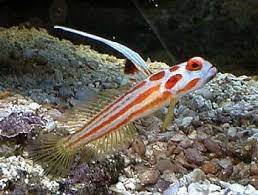
Description:
East to care for and one of the most spectacular members of the Goby family. Yasha White Ray Shrimp Gobies reach a maximum adult size of around 3 inches and can be kept in tanks as small as 10 gallons. They are found on sand or mixed sand rubble, hovering in the water column near its hole. Yasha White Ray Shrimp Gobies will not bother other fish, coral or inverts in your tank. This makes them a great fish to add to reef tanks. Yasha White Ray Shrimp Gobies are well known to pair up with most pistol shrimp as well. This relationship can be very interesting to watch in your tank.
Food and diet:
They continually feed off the bottom while sifting through the sand. They also need to be fed a balanced diet of frozen foods including live and frozen brine shrimp, mysis shrimp, black worms, and other prepared foods for carnivores. We suggest feeding twice a day.
Approximate Purchase Size:
1" to 2-1/2"
Regular Price$89.99
Now $44.99
|
Aquarium Conditioned
Blue Dot Jawfish
Opistognathus rosenblatti
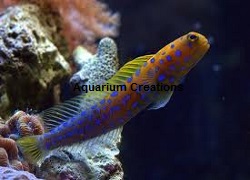
You Tube Video of the Blue Dot Jawfish
Description:
The Blue Dot Jawfish head and body are orange with different shaped metallic blue spots covering all but the fins. As a matter of fact, the neon blue dots actually glow under the aquarium actinic lights! Consider to be the most beautiful and desirable of the jawfish. The Blue Dot Jawfish spends the majority of its time in and around its burrow which serves as its home.It should be kept in a 30 gallon or larger aquarium with docile tank mates. Jawfish require sand substrate as this is how they make their burrows and at least 3 inches is recommended for burrowing. It will rarely become aggressive towards other fish, but is territorial and will fight with its own kind unless they are a mated pair.
Food and diet:
Feed a varied diet consisting of chopped meaty marine foods inluding krill, shrimp, squid, clam, etc..
Approximate Purchase Size:
3" to 4"
|
Regular Price$219.99
Now $174.99
|
Aquarium Conditioned
Powder Blue Tang
Acanthurus leucosternon
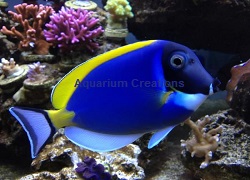 Click to view video of Powder Blue Tang
Click to view video of Powder Blue Tang
Description:
The powder blue tang is one of the most beautiful and coveted fish for marine aquariums. A mature powder blue tang has many different shades of blue, from dark navy to light powder blue, with bright yellow on the dorsal fin and dramatic black markings on the face. Will do best in a reef aquarium with plenty of live rock and hiding places. Provide Powder Blues with plenty of open swimming room. In the wild they swim all over the reef grazing on algae.
Food and diet:
The Powder Blue Tang requires a diet very similar to many of the other surgeonfish kept in captivity. These fish are primarily herbivores, so offering them a good crop of freeze-dried algae sheets coupled with an aquarium containing natural-growing algae works well.
Approximate Purchase Size:
Small/Medium: 2-1/2" to 3-1/2" Medium/Large 4-1/2" to 5-1/2"
|
On Sale
Small/Medium $134.99
Medium/Large $189.99
|
|
Aquarium Conditioned
Purple Dottyback
Pseudochromis porphyreus
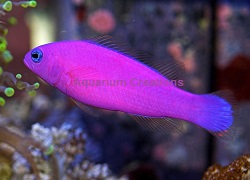
Identification:
:Also known by the common name Magenta Dottyback, what makes this particular species so appealing? Maybe it is its dazzling purple coloration, or perhaps it has something to do with its interestingly curious nature. A 10 gallon or larger aquarium is the correct size. Using live rock, provide ample hiding places, caves, crevices for the fish to go within, seek as home, or use as a hiding place when necessary.
Food and diet:
Dottybacks are carnivorous and naturally prey upon small shrimp, amphipods, copepods and bristleworms. In the aquarium they should be fed a variety of meaty foods such as live, frozen, freeze-dried, and vitamin enriched brine shrimp, finely chopped mysis shrimp, finely chopped krill and other sea foods; as well as carnivore/omnivore pellets and flake foods.
Level of Care:
Easy
Approximate Purchase Size:
1" to 2"
|
Regular Price $24.99
Now $11.99
|
Marine Plants Lower Nitrates!
Red Dragon Tongue Macroalgae
Halymenia durvillei
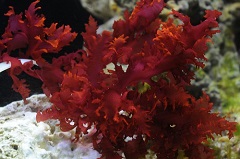
Small Reg. $29.99 Sale $24.99
Med Reg. $39.99 Sale $34.99
Large Reg. $49.99 Sale $44.99
|
Start a Refugium !
Ulva Macroalgae, Aquacultured
Petrolisthes galathinus
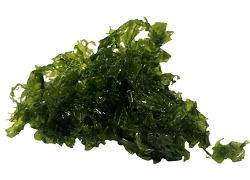 Our Clean Macroalgae is aquacultured in large vats not connected to any fish system to avoid possible parasite or bacteria contamination. You can place our macroalgae directly in your tank without worry.
Our Clean Macroalgae is aquacultured in large vats not connected to any fish system to avoid possible parasite or bacteria contamination. You can place our macroalgae directly in your tank without worry.
8 Ounce Cup reg. price $29.99
On Sale $24.99
|
|
Shaving Brush Plants
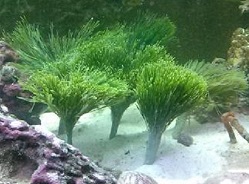
Approx. Size: 4" to 6"
Regular price $15.99 each
Sale Price $13.99 each
3 for $39.99, 6 for $59.99
|
| |
Skunk Cleaner Shrimp
Lysmata amboinensis
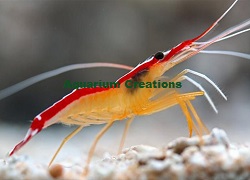
Medium Approx. Size: 1-1/2" to 2"
Regular price $37.99
On Sale $23.99
|
Reef-safe Algae Eater
Green Emerald Crab
Mithrax Sculptus
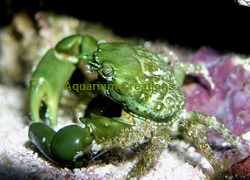
Approx. Size: 1"
Regular price $14.99
On Sale $8.99
|
|
Aquacultured
Tiger Sand Conch
Strombus sp.
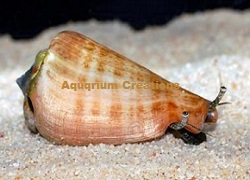
Approx. Size: 1" to 2"
Totally peaceful toward other tank mate's
Great for Cleaning Sand, even Red Slime algae)
Regular price $19.99
On Sale $15.99
|
| |
|
Low prices on marine life like you wll never see anywhere else. We sharpened our pencil to give you the lowest prices possible on saltwater aquarium fish, a huge selection of live corals, and marine invertebrates including some rare one's not often found! Beyond the fact of our enormous variety, as of 2021, there are no other marine life distributors that have their facilities designed for the long term holding of saltwater fish, live coral and invertebrates as Aquarium Creations has. All incoming saltwater aquarium fish, live coral, and marine invertebrates go to our long term holding facility, after acclimation and are held there for a period of time from 15 days to 30 days, releasing to our ship out facilities only when confident of the health and quality of the specimens. In our long term systems, the animal's stress level remains low and feeding response well above what short term shippers see and provide. The benefits are many. Any problems are discovered while the marine life is at our holding facility not after delivery to our customers. All marine life is shipped stronger, more stress-free, eating so much better, with good stomachs and in better condition then "ocean fresh" fish could ever be shipped. We hope you too will order now and see the large difference.
Copyright 2021 Aquarium Creations Online. While we do our best to make an accurate representation of marine life on our website there is no guarantee that the actual marine life delivered will match the colors seen on your computer. Often the color reproduction on a computer screen or mobile device may not produce the correct colors.
|
| |




 Click to view video of Powder Blue Tang
Click to view video of Powder Blue Tang
 Hard to Find! Red Feelers and Red Antenna's
Hard to Find! Red Feelers and Red Antenna's







